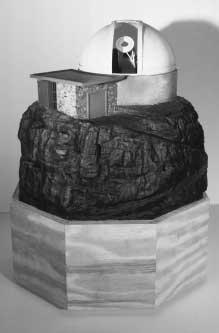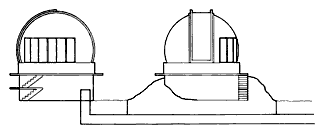
Observatories exist in an ambiguous state with regard to scale. The microscope, which adds light to the infinitesimal, and renders it large, stands in contrast to the observatory on its lonely precipice, taking in the vastness of the universe, and reading its wavelengths. By seizing the universe, the observatory seeks to make itself gigantic. In a gallery, the "viewer" or "audience" is addressed as a generality, a vague target. This viewer is understood to adhere to laws of psychology of perception and to have cultural biases, and is the object of speculation but is, with reverence, always left alone to form judgements without interference. This viewer is a cipher like the neutral space in which it ponders. Infinitely variable, this viewer knows it can't be deciphered, and also knows it is being studied, and spattered with incorrect assumptions.
As an observatory is thought to be a receptacle for objective information, a gallery is thought to be an independent terminal for the reception of cultural product. The dimensions of the gallery fluctuate with the imagined status of the viewer, and it is difficult for the viewing mechanism to determine its own status. This model of the Mount Oekos Observatory is fitted with a video camera which sends an image of a false moon to a model of the gallery, into which viewers may completely insert their heads. The power to operate the camera and monitor is dependent on the arbitrary presence of light on a bank of solar panels in the adjacent room.
